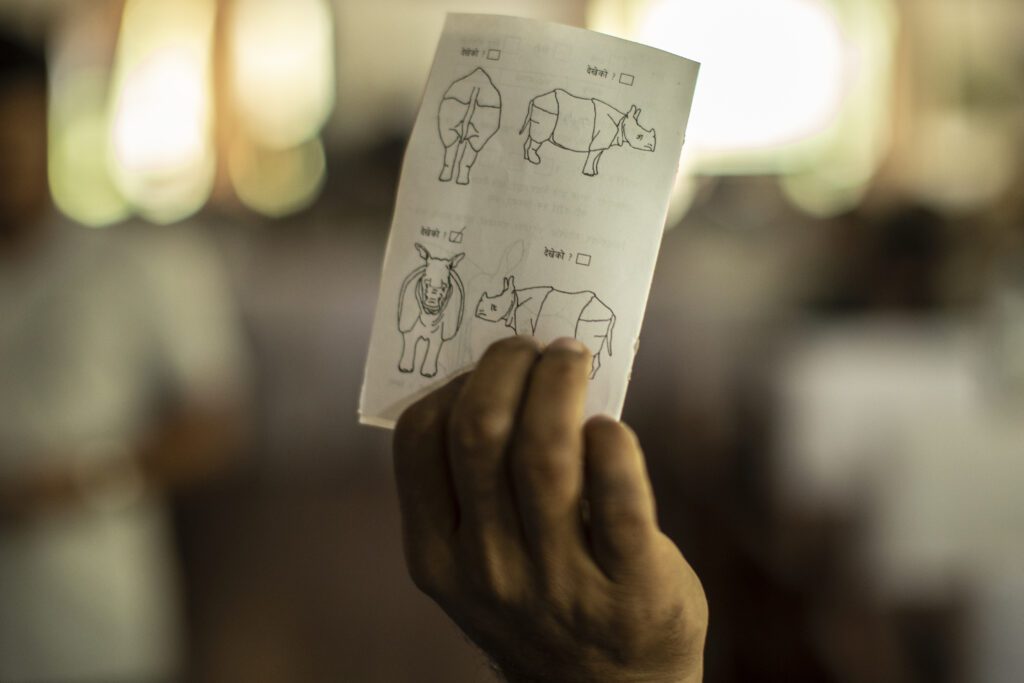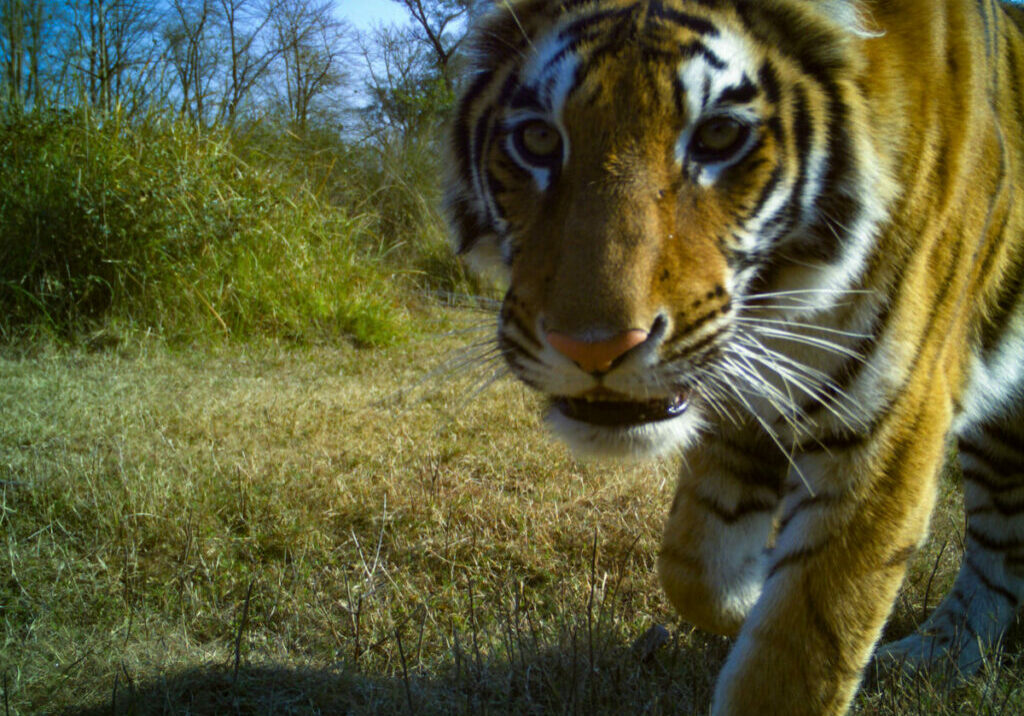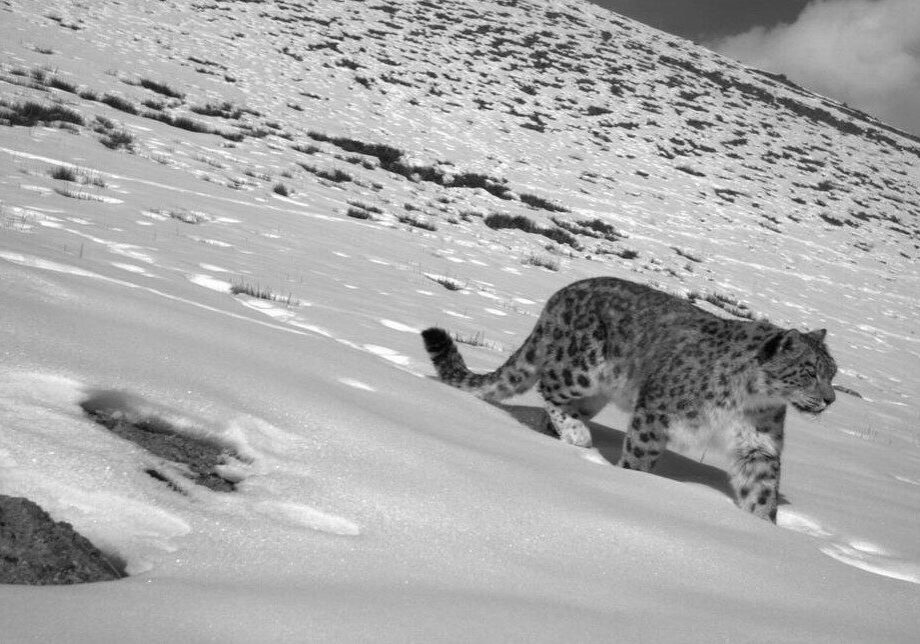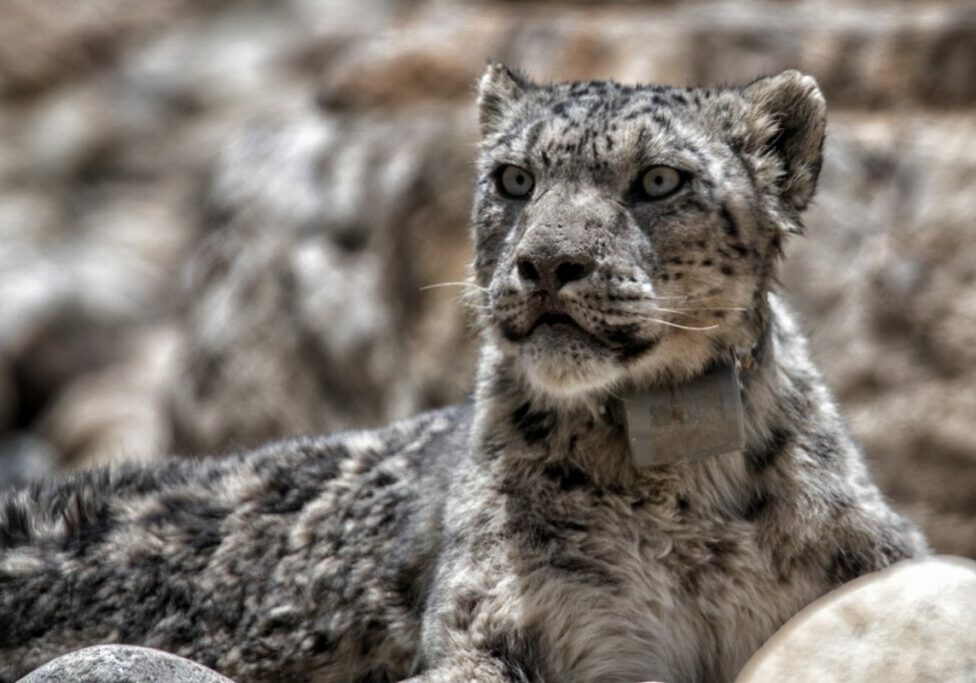It’s just an ordinary day at work. I’m at my desk reviewing video footage of Nepal’s 2021 rhino count. I hit ‘play’ and I’m greeted by the sounds of a shrill whistle blowing against the wind, and the call: “Number 16! Number 16!”
I’m immediately transported to another time and place: March 2005, Chitwan National Park. My first rhino count. It’s 8am and I’m manoeuvring through the misty forest on an elephant. Our team is Number 32. This will be my call sign over the next three weeks.
Slowly but surely, we make our way through the tall elephant grass that grows as high as seven metres. Suddenly my walkie-talkie beeps.
“Number 32, this is Number 33.” Caught off guard, I fumble with the walkie-talkie as I respond. “Yes, Number 33.”
It’s the captain of the rhino-count field team. His voice crackles: “A rhino is headed in your direction, please check and note the animal description. Over.”
And then I see it. Two metres tall with a prehistoric-looking grey body, armour-plated skin and a hooked horn, standing just 10 metres away. I can’t discern its gender at first, but then I see it’s an adult male. I note its features and condition, along with the date and time.
My first rhino counted in my maiden rhino count. I counted three rhinos that morning. The whole expedition – 33 teams – counted 15 in the day.

© WWF-NEPAL / SAMIR JUNG THAPA
I’ve been part of five national rhino counts since then, but the process remains much the same. Teams systematically combing through rhino habitat blocks over a one-month period, counting the rhinos they see.
Because rhinos are most active in the early mornings and evenings, the count begins at 6am sharp and finishes by midday. The rest of the day is spent setting up camp, cooking for close to 200 people, reviewing the day’s data and planning the logistics for the next day. We track and record the team’s movements using GPS, looking out for any possible gaps or potential double-counting.
The rhino count may sound simple, but it’s physically and mentally exhausting. In places, the dense vegetation can make it difficult to spot rhinos or identify their physical features.
Over the course of 25 days, I counted 10 rhinos. In total, 409 rhinos were recorded nationally that year, 372 of them in Chitwan National Park. It was the lowest population figure since the Nepalese government started counting rhinos in 1994.
But since then, rhinos have made a remarkable recovery. Their numbers have increased at every count since, and are now close to double the number from my first count 16 years ago. That brings me immense joy and satisfaction.

© KANCHAN THAPA
In 2021, Nepal recorded a total of 752 rhinos – 694 of which were found in Chitwan National Park, a vast expanse of forested hills, grasslands and river valleys covering nearly 1,000 sq km. In the past, rhino poaching in Nepal was rampant, but strong protection efforts have helped the park achieve 365 consecutive days with zero rhino poaching seven times between 2010 and 2021.
That’s a tribute to the commitment and hard work of the Nepalese government and the local communities living in the buffer zone around the park – and to you, who’ve helped support WWF’s activities in the area.
While rhino numbers continue to increase, the rate has slowed since the last count. In the west of Chitwan, where most rhinos are concentrated, the population density may be reaching its upper limits. Improving habitat conditions in the east of the park and relocating rhinos to other areas are among our priorities for the coming years.
Counting rhinos is a laborious and logistically demanding task. It can be dangerous too – I know from experience how painful it is when you fall off an elephant, and there’s always the chance of encountering a wild animal. While there are always a few injuries, in 2021, tragically, a member of the count was killed by a tiger.
After seven national rhino counts using the same methodology, we’re now looking into innovations that can make the process more efficient and reliable as well as safer. Genetic sampling using rhino dung and surveying areas using drones fitted with thermal cameras are two possible options.
But whatever methods are used for the next count in 2025, we’re determined that it will reflect further progress in the rhino’s recovery.
More to explore

Photo story: A day in the life of Nepal’s tiger trackers
Monitoring wild tiger numbers is only possible thanks to the work of dedicated teams. Take a trip into the field with Nepal’s intrepid tiger trackers

